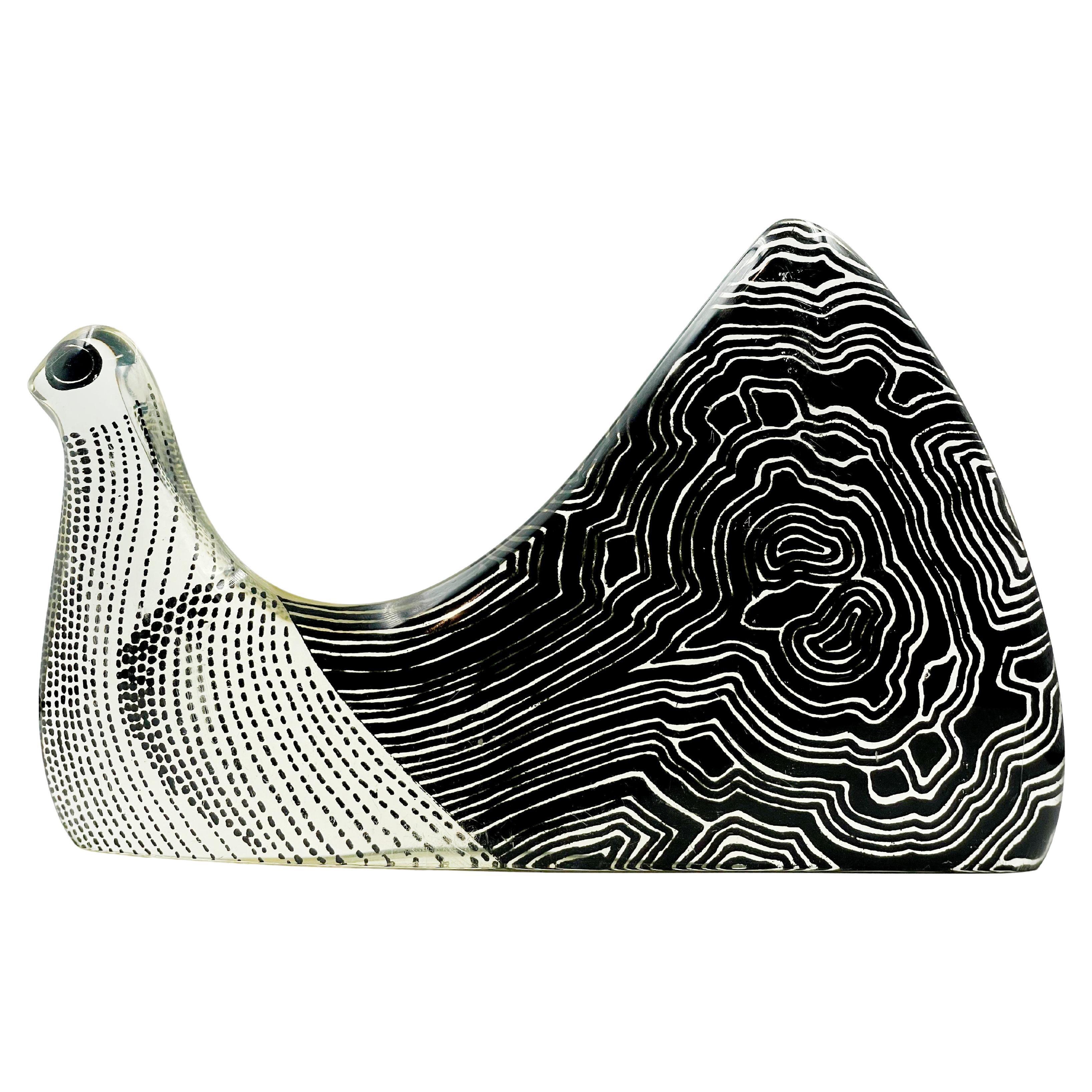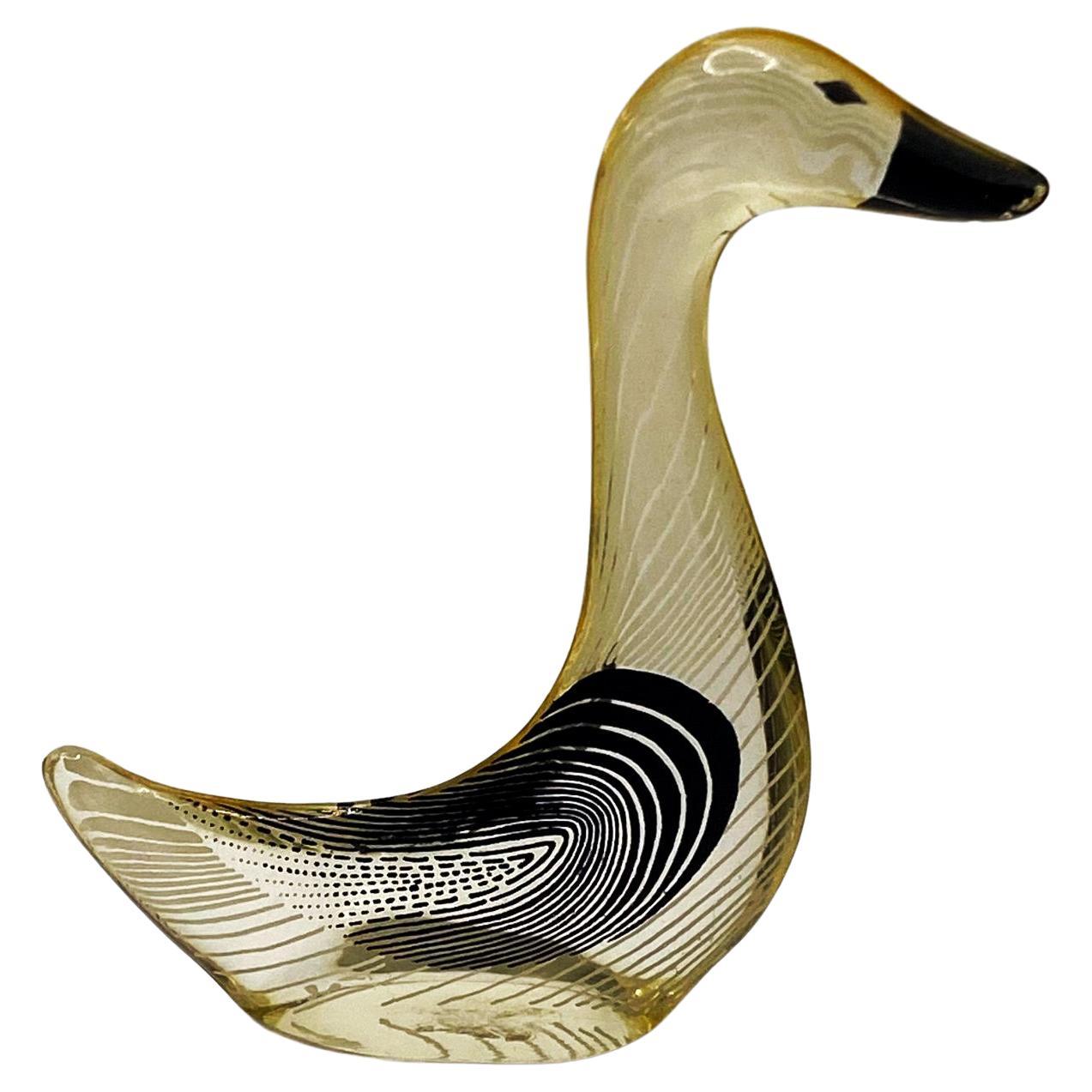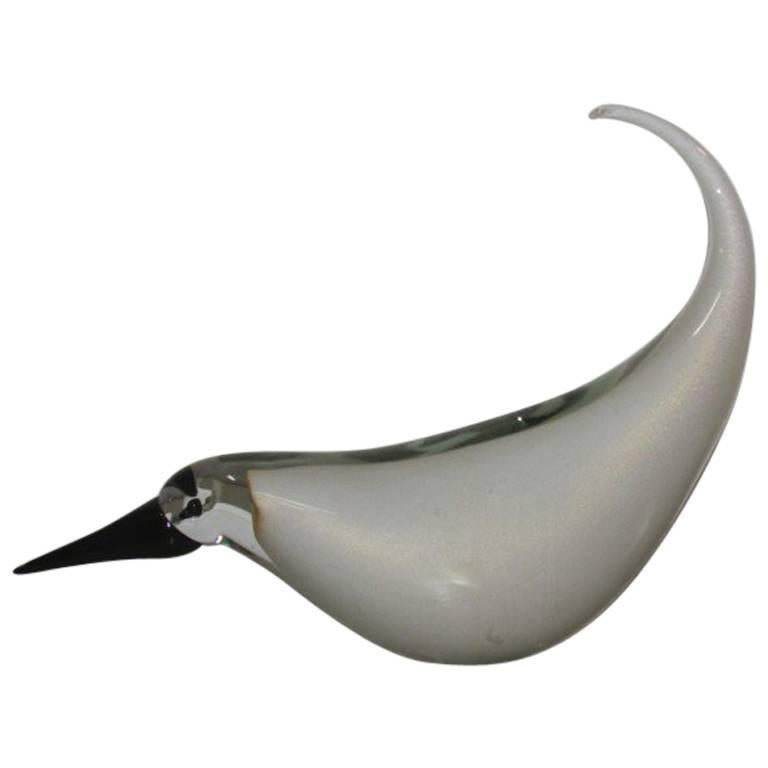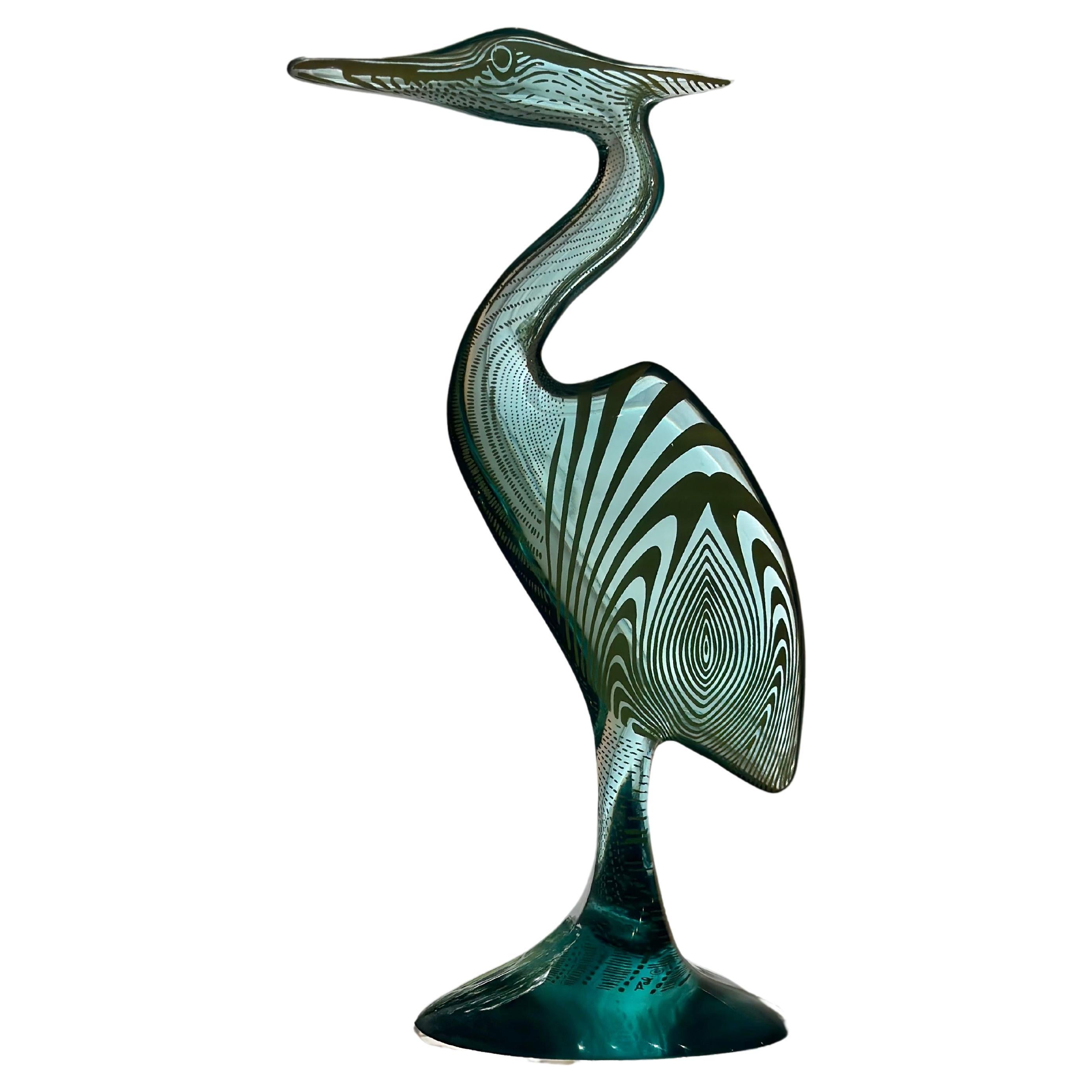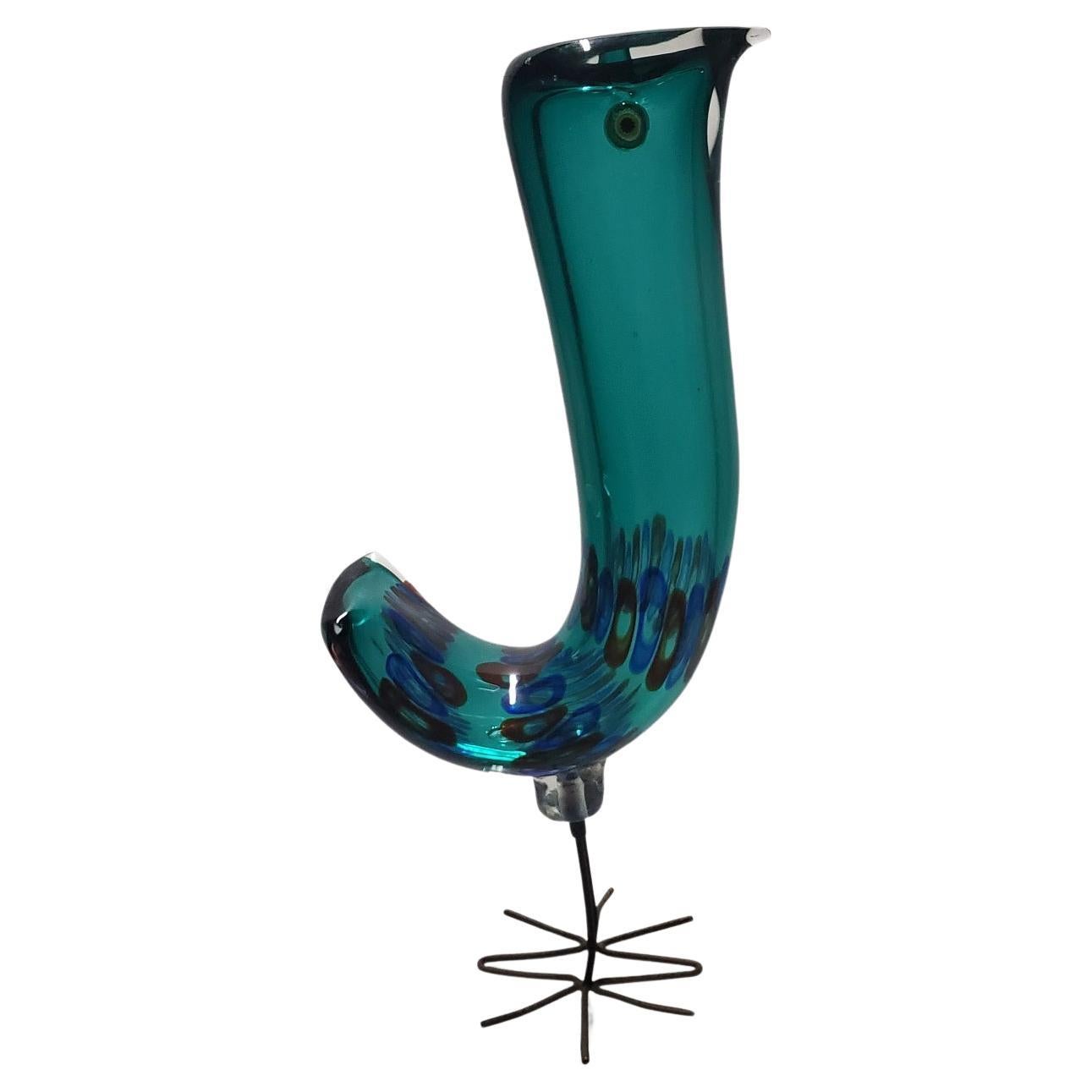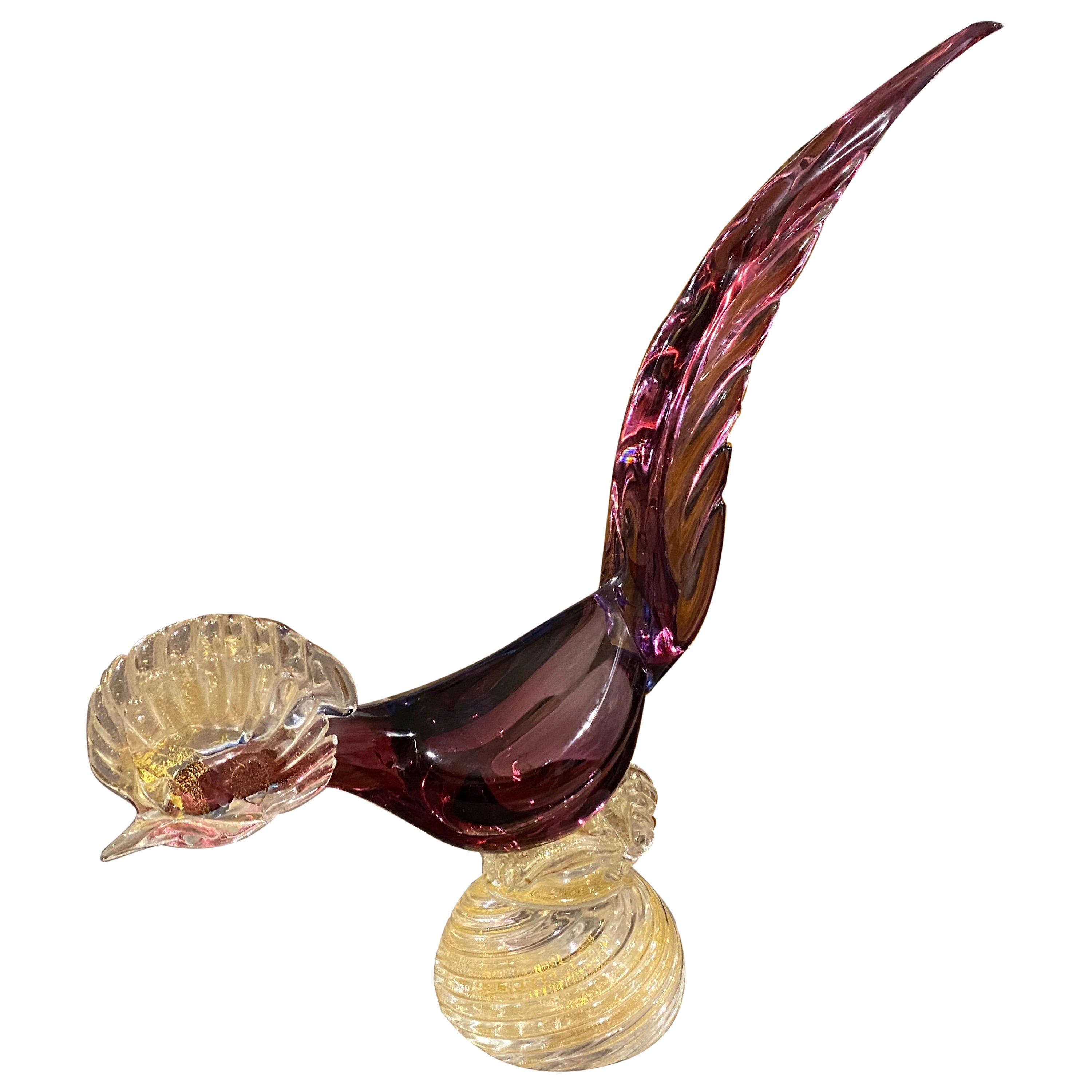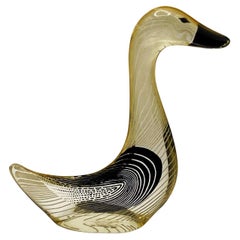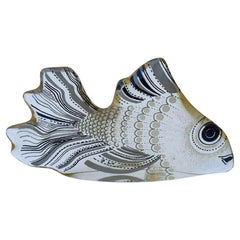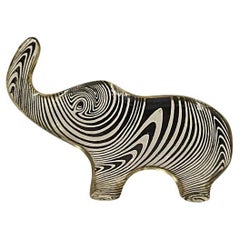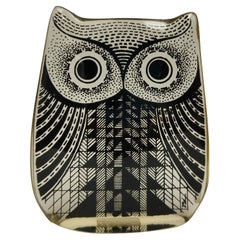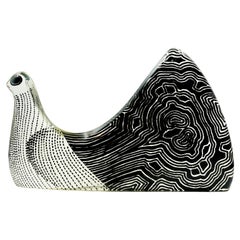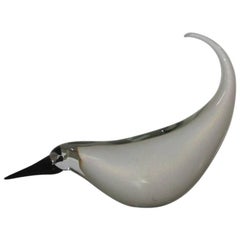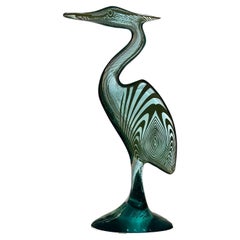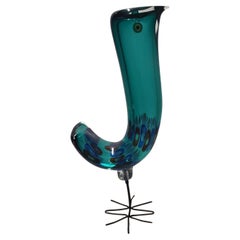Items Similar to Abraham Palatnik, Bird, Kinetic Sculpture in Acrylic Resin, Brazil, circa 1960
Want more images or videos?
Request additional images or videos from the seller
1 of 6
Abraham Palatnik, Bird, Kinetic Sculpture in Acrylic Resin, Brazil, circa 1960
$330.21
$530.6937% Off
£247.17
£397.2337% Off
€280
€45037% Off
CA$454.46
CA$730.3837% Off
A$506.54
A$814.0837% Off
CHF 265.76
CHF 427.1237% Off
MX$6,185.69
MX$9,941.2837% Off
NOK 3,365.16
NOK 5,408.2937% Off
SEK 3,180.58
SEK 5,111.6537% Off
DKK 2,131.56
DKK 3,425.7237% Off
About the Item
Abraham Palatnik (1928-2020)
Bird Sculpture, circa 1960
Polyester resin and pigments.
Measures: (21.5 x 9.5 x 2.5 cm)
This Polyester resin sculpture representing a bird, in the colors yellow and black
It is part of the series of animal sculptures that Abraham Palatnik made from the 1960s, in small format, they are small jewels of kinetic art, a movement that Palatnik was one of the pioneers.
"Born in Natal, Rio Grande do Norte, Brazil, in 1928 to a family of Russian Jews, Palatnik moved with his family to Tel Aviv (then Palestine) when he was four years old. He attended Montefiori Technical School, where he specialized in internal combustion engines, and studied art under the tutelage of the painter Haaron Avni and the sculptor Sternshus at the Municipal Institute of Art. When he returned to Brazil in 1948, his output consisted mainly of figurative and landscape paintings and charcoal drawings. However, his encounters with the complex works made by schizophrenic patients at the Pedro II Psychiatric Hospital, where he taught painting workshops alongside Almir Mavignier and Ivan Serpa, caused him to abandon his early approach to traditional image-making: “I decided to start all over from scratch,” Palatnik said. “The discipline from the school, the studio, was no longer of any use.”
Freed from the perceived restrictions of his training, Palatnik became closely associated with Grupo Frente, a movement started by Serpa and rooted in geometric abstraction. He used his knowledge of engineering and mechanics as well as his interest in natural forces to build his first Kinechromatic work. Titled Azul e roxo em seu primeiro movimento (Blue and Purple in First Movement), 1949, the piece debuted at the inaugural São Paulo Bienal in 1951. “In reality, it was luck that got me into the biennial,” Palatnik said in a 1986 interview. “At first, my machine was rejected, because it wasn’t a painting, a sculpture, a drawing, or a print.” The piece, which eventually gained entry, shocked the biennial’s grand prize jury, who gave Palatnik an honorable mention, calling his work an “important manifestation of modern art.” By 1969, he had participated in seven more editions of the international exhibition.
Palatnik would also present work in the 1964 Venice Biennale, the 1966 Biennial of Córdoba, and the 1997 and 2005 editions of the Mercosul Biennial. His art was featured in significant exhibitions on kinetic art, including “Mouvement 2” (1964) at Denise René gallery in Paris; “Lumière, Mouvement et Optique” (1965) at the Brussels Palace of Fine Arts; “Kinetic Art” (1966) at the Museum of San Francisco; and, more recently, “Delirious: Art at the Limits of Reason, 1950–1980” (2017) at the Metropolitan Museum of Art in New York and “The Other Trans-Atlantic: Kinetic & Op Art in Central & Eastern Europe and Latin America 1950s–1970s” (2018) at Sesc Pinheiros in São Paulo. A major retrospective, “Abraham Palatnik—The Reinvention of Painting,” was staged at several venues across Brazil, including the Centro Cultural Banco do Brasil Rio de Janeiro (2017); the Fundação Iberê Camargo, Porto Alegre (2015); the Museu Oscar Niemeyer, Curitiba (2014); and the Museu de Arte Moderna de São Paulo (2014).
Heavily influenced by design principles—Palatnik established the furniture factory Arte Vida with his brother in 1954, which churned out glass-topped tables as well as sofas and chairs—the artist began creating his “Progressive Relief” series, abstractions made from arrangements of thin strips of jacaranda wood and polyester resin positioned side by side, in the ’60s. Throughout his seven-decade career, Palatnik would produce his “Kinetic Objects” series, which focused on the metal rods, strings, gears and motors, and sometimes electromagnets, previously hidden in his “Kinechromatic Devices,” that set the pieces in motion; his “Ludic Objects” series, which comprised geometric shapes in various colors that were activated by viewers through a magnetized stick; and his late “W” paintings. He also designed dozens of acrylic animals as part of a collection sold by the design firm Silon, which he and his brother opened in the 1970s." (Reference: Artforum's site).
- Creator:Abraham Palatnik (Artist)
- Dimensions:Height: 3.75 in (9.5 cm)Width: 8.47 in (21.5 cm)Depth: 0.99 in (2.5 cm)
- Style:Kinetic (In the Style Of)
- Materials and Techniques:
- Place of Origin:
- Period:
- Date of Manufacture:circa 1960
- Condition:Wear consistent with age and use.
- Seller Location:PARIS, FR
- Reference Number:1stDibs: LU6408230105792
About the Seller
No Reviews Yet
Vetted Professional Seller
Every seller passes strict standards for authenticity and reliability
Established in 2021
1stDibs seller since 2022
16 sales on 1stDibs
Typical response time: <1 hour
- ShippingRetrieving quote...Shipping from: PARIS, France
- Return Policy
Authenticity Guarantee
In the unlikely event there’s an issue with an item’s authenticity, contact us within 1 year for a full refund. DetailsMoney-Back Guarantee
If your item is not as described, is damaged in transit, or does not arrive, contact us within 7 days for a full refund. Details24-Hour Cancellation
You have a 24-hour grace period in which to reconsider your purchase, with no questions asked.Vetted Professional Sellers
Our world-class sellers must adhere to strict standards for service and quality, maintaining the integrity of our listings.Price-Match Guarantee
If you find that a seller listed the same item for a lower price elsewhere, we’ll match it.Trusted Global Delivery
Our best-in-class carrier network provides specialized shipping options worldwide, including custom delivery.More From This Seller
View AllAbraham Palatnik, Goose, Kinetic Sculpture in Acrylic Resin, Brazil, C. 1960
By Abraham Palatnik
Located in PARIS, FR
Abraham Palatnik (1928-2020)
Sculpture "Canard", c. 1960
Polyester resin and pigment in black and white.
Kinetic art - Beautiful and rare polyester resin sculpture from the HOME AND FARM collection representing an goose.
This sculpture is part of the series of animal sculptures that Abraham Palatnik made from the 1960s, in small format, they are small jewels of kinetic art, a movement of which he was one of the pioneers.
"Born in Natal, Rio Grande do Norte, Brazil, in 1928 to a family of Russian Jews, Palatnik moved with his family to Tel Aviv (then Palestine) when he was four years old. He attended Montefiori Technical School, where he specialized in internal combustion engines, and studied art under the tutelage of the painter Haaron Avni and the sculptor Sternshus at the Municipal Institute of Art. When he returned to Brazil in 1948, his output consisted mainly of figurative and landscape paintings and charcoal drawings. However, his encounters with the complex works made by schizophrenic patients at the Pedro II Psychiatric Hospital, where he taught painting workshops alongside Almir Mavignier...
Category
Mid-20th Century Brazilian Kinetic Animal Sculptures
Materials
Acrylic, Paint
Abraham Palatnik, Fish, Kinetic Sculpture in Acrylic Resin, Brazil, C. 1960
By Abraham Palatnik
Located in PARIS, FR
Abraham Palatnik (1928-2020)
Sculpture "Fish", c. 1960
Polyester resin and pigment in black and white.
Signed PAL
Kinetic art - Beautiful and rare polyester resin sculpture from the HOME AND FARM collection representing a goose.
This sculpture is part of the series of animal sculptures that Abraham Palatnik made from the 1960s, in small format, they are small jewels of kinetic art, a movement of which he was one of the pioneers.
"Born in Natal, Rio Grande do Norte, Brazil, in 1928 to a family of Russian Jews, Palatnik moved with his family to Tel Aviv (then Palestine) when he was four years old. He attended Montefiori Technical School, where he specialized in internal combustion engines, and studied art under the tutelage of the painter Haaron Avni and the sculptor Sternshus at the Municipal Institute of Art. When he returned to Brazil in 1948, his output consisted mainly of figurative and landscape paintings and charcoal drawings. However, his encounters with the complex works made by schizophrenic patients at the Pedro II Psychiatric Hospital, where he taught painting workshops alongside Almir Mavignier...
Category
Mid-20th Century Brazilian Kinetic Animal Sculptures
Materials
Acrylic, Paint
Abraham Palatnik, Elephant, Kinetic Sculpture in Acrylic Resin, Brazil, C. 1960
By Abraham Palatnik
Located in PARIS, FR
Abraham Palatnik (1928-2020)
Sculpture "Elephant", c. 1960
Vintage label (made in Brazil).
Polyester resin and pigment in black.
Kinetic art - Beautiful and rare polyester resin sculpture from the HOME AND FARM collection representing an elephant signed in the base.
This sculpture is part of the series of animal sculptures that Abraham Palatnik made from the 1960s, in small format, they are small jewels of kinetic art, a movement of which he was one of the pioneers.
"Born in Natal, Rio Grande do Norte, Brazil, in 1928 to a family of Russian Jews, Palatnik moved with his family to Tel Aviv (then Palestine) when he was four years old. He attended Montefiori Technical School, where he specialized in internal combustion engines, and studied art under the tutelage of the painter Haaron Avni and the sculptor Sternshus at the Municipal Institute of Art. When he returned to Brazil in 1948, his output consisted mainly of figurative and landscape paintings and charcoal drawings. However, his encounters with the complex works made by schizophrenic patients at the Pedro II Psychiatric Hospital, where he taught painting workshops alongside Almir Mavignier and Ivan Serpa, caused him to abandon his early approach to traditional image-making: “I decided to start all over from scratch,” Palatnik said. “The discipline from the school, the studio, was no longer of any use.”
Freed from the perceived restrictions of his training, Palatnik became closely associated with Grupo Frente, a movement started by Serpa and rooted in geometric abstraction. He used his knowledge of engineering and mechanics as well as his interest in natural forces to build his first Kinechromatic work. Titled Azul e roxo em seu primeiro movimento (Blue and Purple in First Movement), 1949, the piece debuted at the inaugural São Paulo Bienal in 1951. “In reality, it was luck that got me into the biennial,” Palatnik said in a 1986 interview. “At first, my machine was rejected, because it wasn’t a painting, a sculpture, a drawing, or a print.” The piece, which eventually gained entry, shocked the biennial’s grand prize jury, who gave Palatnik an honorable mention, calling his work an “important manifestation of modern art.” By 1969, he had participated in seven more editions of the international exhibition.
Palatnik would also present work in the 1964 Venice Biennale, the 1966 Biennial of Córdoba, and the 1997 and 2005 editions of the Mercosul Biennial. His art was featured in significant exhibitions on kinetic art, including “Mouvement 2” (1964) at Denise René gallery in Paris; “Lumière, Mouvement et Optique” (1965) at the Brussels Palace of Fine Arts; “Kinetic Art” (1966) at the Museum of San Francisco; and, more recently, “Delirious: Art at the Limits of Reason, 1950–1980” (2017) at the Metropolitan Museum of Art in New York and “The Other Trans-Atlantic: Kinetic & Op Art in Central & Eastern Europe and Latin America 1950s–1970s” (2018) at Sesc Pinheiros in São Paulo. A major retrospective, “Abraham Palatnik—The Reinvention of Painting,” was staged at several venues across Brazil, including the Centro Cultural Banco do Brasil Rio de Janeiro (2017); the Fundação Iberê...
Category
Mid-20th Century Brazilian Kinetic Animal Sculptures
Materials
Acrylic, Paint
Abraham Palatnik. Owl II, c 1970. Signed under the base. Painted acrylic resin
By Abraham Palatnik
Located in PARIS, FR
This captivating piece, entitled "Owl II", is a creation by the artist Abraham Palatnik, dating from about 1970. Made of acrylic resin painted with artistic meticulousness, this work...
Category
Mid-20th Century Brazilian Mid-Century Modern Animal Sculptures
Materials
Resin, Acrylic
Weiss workshop. Brazilian ceramics - Centerpiece, c. 1950
By Weiss
Located in PARIS, FR
This Brazilian ceramic piece from the Weiss workshop, dating from the 1950s, is a unique and colorful work of art. This room, with a length of 30 cm, is designed to be used as a cent...
Category
Mid-20th Century Brazilian Mid-Century Modern Porcelain
Materials
Ceramic, Porcelain
Abraham Palatnik. Elephant, c. 1960
By Abraham Palatnik
Located in PARIS, FR
Kinetic art - Beautiful and rare polyester resin sculpture from the HOME AND FARM collection representing an elephant signed in the base. c. 1960.
This sculpture is part of the seri...
Category
Mid-20th Century Brazilian Kinetic Mobiles and Kinetic Sculptures
Materials
Acrylic
You May Also Like
Abraham Palatnik Lucite Acrylic Sculpture Doves Bird Brazil, 1970s
By Abraham Palatnik
Located in Autonomous City Buenos Aires, CABA
Doves bird sculpture in Lucite and acrylic by Abraham Palatnik, circa 1970.
Category
Vintage 1970s Brazilian Mid-Century Modern Animal Sculptures
Materials
Resin, Acrylic, Lucite
Bird Murano Art Glass Barbini Attributed, 1970
By Barbini
Located in Palermo, Sicily
Bird Murano art glass Barbini attributed, 1970.
Category
Vintage 1970s Italian Mid-Century Modern Animal Sculptures
Materials
Murano Glass
$1,226 Sale Price
20% Off
Abraham Palatnik. Op Art Pelican Sculpture in Polyester Resin 1970's
By Abraham Palatnik
Located in Sao Paulo, SP
Rare Brazilian modern kinetic sculpture in turquoise made of acrylic resin designed by Abraham Palatnik, part of Artemis Collection made in the 1970's.
Category
Vintage 1970s Brazilian Kinetic Animal Sculptures
Materials
Resin, Acrylic
Alessandro Pianon ' Pulcini ' Murano Bird Sculpture
By Alessandro Pianon, Vistosi
Located in Middlesex, NJ
Alessandro Pianon ' Pulcini ' Murano Bird Sculpture
Category
20th Century Italian Mid-Century Modern Animal Sculptures
Materials
Murano Glass
1970s Barovier Style Mid-Century Modern Murano Glass Bird Italian Sculpture
By Barovier
Located in Aci Castello, IT
A murano glass sculpture of a bird hand-crafted in Italy in the Seventies, colors, the gold inside the glass and style are in the manner of Barovier. This Murano Glass Bird is an ex...
Category
Mid-20th Century Italian Mid-Century Modern Animal Sculptures
Materials
Murano Glass
Kjell Engman for Kosta Boda Large bird sculpture , 1970’s
By Kjell Engman
Located in Delft, NL
Kjell Engman for Kosta Boda Large bird sculpture , 1970’s
Dimensions: 48cm H 23cm W , 20cm D
Condition: Mint
Designer : Kjell Engman
Producer: Kosta Boda
Origin: Sweden
Material: Glass
Category
Vintage 1970s Swedish Scandinavian Modern Animal Sculptures
Materials
Art Glass
More Ways To Browse
Small Metal Animals
Mid Century Resin Sculpture
Midcentury Modern Kinetic Sculpture
Acrylic Table Yellow
Kinetic Wood Sculpture
Metal Bird Sculptures
Used Hospital Chairs
Bird Sofa
Metropolitan Couch
Yellow Retro Table And Chairs
Brasil Table
Bird Office Chair
Mid Century Couch Purple
Stick Sofa
Eastern European Chairs
Mid Century Printed Modern Sofa
1970s Acrylic Chairs
Oscar Niemeyer Rio
